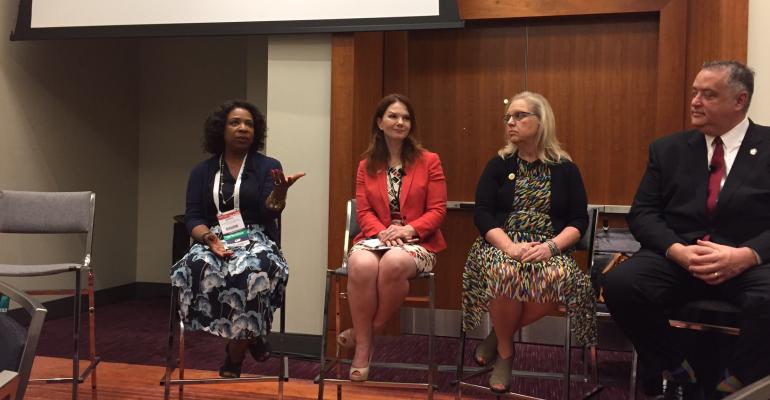Getting senior leadership or a board to approve meetings-related expenses sometimes is a no-brainer—you need to add a protein to the breakfast buffet so people will make it through the morning sessions? Done, was the answer Donna Jarvis-Miller got when she passed along some of her budget requests for approval. Other ideas are a tougher sell, she told participants at a session during the American Society of Association Executives 2017 Annual Meeting and Exposition, held in Toronto in August.
Jarvis-Miller, director, membership operations and events, with the American Public Human Services Association, always asks her meeting planners, “What’s working? What’s your biggest paint point? If you had no barriers, what would you want?” When they came back with a request to change to a more expensive, but more capable audiovisual company. She got that approved, too.
The key is to remember that some of the things that will increase attendance—and create revenue—may not be intuitively obvious. If you can make the case that there will be a return on the investment even in indirect ways, you’ll be able to get that to yes.
Learn to Like Your Loss Leaders
As Jarvis-Miller pointed out, sometimes, an event budget is built knowing that it will be a money-loser. Think of it as investing in your membership, she said. “It’s important that association executives and boards can look beyond the bottom line and see the growth in your members. Even something as simple as bringing florals to the keynote can make a difference.”
Fellow panelist Scott Stanton, chief financial officer with the International Association of Exhibitions and Events, said, “It’s about financial return, but ROI also means achieving non-financial goals like retention rates. Serving member needs is the most important thing; it’s not always about the bottom line—and this is a finance guy talking.” Added Robin Hayes, senior director, conference planning and professional education with the American Counseling Association, “It’s all about the experience.”
What Arguments Work Best for a No-Revenue Expense?
One audience member said she got the OK to spend what it took to get the database cleaned up, but the expense was offset by the time it gave back to staff to do other things. Stanton agreed that that showing increased efficiency and productivity for staff definitely helps to get a budget item approved.
When Jarvis-Miller first joined her organization, it was still doing registration manually. “I tracked all the time and expense of redoing errors, reprinting badges, inputting faxed registrations,” and then pointed out how an automated system would free up staff to do more productive tasks.
Panelist Natasha Rankin, chief operating officer with the American Counseling Association, said meeting professionals need to show decision makers that an expense is not just an expense—“It’s a solution with an expense tied to it. What problem are you solving? Walk in with the solution and the data to support it.”
Of course, you need to have the data, and a means to track and analyze it. “You need to be able to use the data to get beyond the anecdotal. Not to be driven by data, but to be informed by it,” she said. While you likely have conference-specific goals, what other organizational targets are you trying to achieve, and how will the conference add to that?
What About Potential Revenue-Eating Expenses?
Many association leaders remain concerned about adding live-streaming options to their events, thinking that the money they invest could actually cause them to lose live attendees—and the revenue associated with them.
But think about the percentage of members who actually come to the live conferences. If only a relatively small percentage of your total membership shows up on site, how do you meet the needs of the rest? Hayes said that is the reason ACA began live-streaming its keynotes and a limited menu of sessions. As Rankin pointed out, ACA decided which sessions to live stream based on what would most resonate with those who couldn’t afford to go. “So we actually extended our audience.”
Stanton explained, “If you have new expenses, it’s important to create the story to sell that idea. Everyone is a salesperson. The reason could be that the new idea is going to create revenue, or it could be a break-even proposition with potential for growth, or something you have to do to stay relevant.”
Hayes said the live streaming, which was a hard sell, is still break even. “But my hope is that we will continue to see growth in revenue.”
“The question I have to ask is, ‘What if we don’t do this?’” Stanton said. “If we don’t do it, somebody else might and you become irrelevant.”





